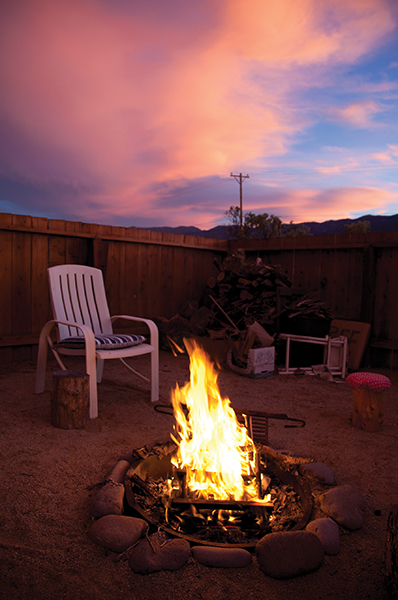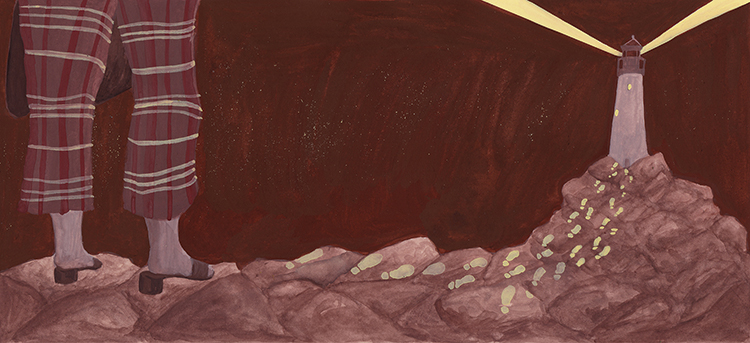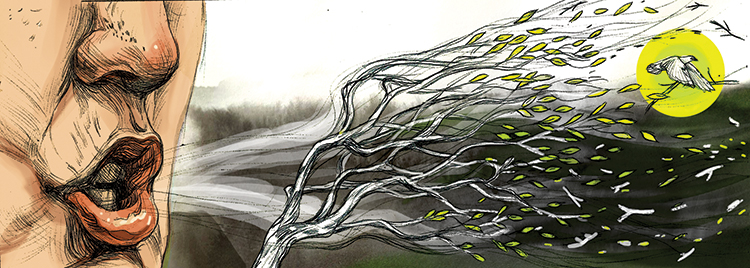Fire Pit Fun
by Anna Herman
A few years back I read a book called “Catching Fire: How Cooking Made Us Human,” which posits that learning to use fire was the essential factor in the evolution of mankind. Sitting around a fire does indeed feel like a quintessentially human experience—satisfying the primal desires for warmth and light in the darkness. We may be less concerned about protection from lurking wild beasts, but certainly appreciate the strength in numbers when friends and family gather round together. While summer may be the season for beach bonfires, fall is when a fire allows us to spend time outside even as the nights cool off.
Outdoor fires get tricky in urban environs. Barbecue grills are common in city parks, fire rings are not. Philly’s fire code prohibits open burning except by approval; the air quality code prohibits open fires except for home cooking, which—as someone old enough to remember the smoke from leaf and brush fires—is a good thing.
So what should those of us do who want to sing around the campfire? Portable outdoor fireplaces used in compliance with city guidelines—outlined at phila.gov— are permitted. A range of clay, metal and stone “patio fireplaces” can be set up safely and legally in the city, and with some creativity you can build and use a fire pit in your backyard or community garden.
One of my neighbors found a capacious cup-shaped castoff industrial artifact made of heavy-gauge iron. Buried partway in a pit of sand, surrounded by pea gravel, it resulted in striking feature to the backyard, and a perfect spot to contain the flames of burning logs. I simply dug up a small section of lawn—20 feet from my house—spread sand, and arranged bricks and stones to create a semipermanent area for backyard cooking and occasional small bonfires. With a variety of camping style grates and various cast iron pans and Dutch ovens, I grill, rotisserie, bake beans and even make fruit cobbler in my backyard.
Making A Fire Pit
~ Clear grass and other flammable materials from the site. Spread a 3- to 5-inch layer of sand as the base. Dig out the grass around the perimeter for at least 10 inches as dry underground roots can spread fire. A “break” in vegetation will help prevent an escaped fire from spreading.
~ Pile dirt, sand, bricks or rocks around the pit to help prevent fire on the ground from escaping.
~ The fire pit should be at least 6 inches deep at the center and 2 feet across, to help keep the embers and flames contained.
Lighting Your Fire Pit
First of all, if it’s extremely windy, it’s not safe to light your fire, and you should always check the wind direction before lighting a fire so that you can remove anything flammable downwind of your pit. Never use any flammable fluids (gasoline, lighter fluid, etc.) to light or relight fires.
~ If the ground is very dry, drench the perimeter of the pit an hour or two before building the fire
~ Use rolled newspapers under stacked kindling topped with small logs to get fire started. Add larger logs once the kindling is burning well.
~ Make a homemade fire starter by melting down candle stubs and pouring them over dryer lint in a clean and dry waxed milk carton. Cut into 2-inch slices when firm. One or two slices will light kindling.
Enjoying Your Fire Pit Safely
Standard cautions apply here: Everyone knows that you shouldn’t leave a fire unattended, that pets and children should always be attended, and that wearing loose clothing or scarves is asking for trouble—as is building a bigger fire than necessary. Here are some other good measures to keep in mind.
~ Use a wire mesh cover to keep embers inside and help prevent children or pets from falling in.
~ Don’t burn garbage or paper products that can easily spark and throw off embers, and avoid soft woods like pine or cedar that are prone to “popping” and throwing sparks
~ Be prepared. Keep a container of water and a hose nearby in case of an emergency.
Extinguishing Safely
Did you know that ashes can still be hot enough to cause a fire even after two or three days? Keep these practices in mind when it’s time to call it a night.
~ Have a shovel and dirt or sand nearby to cover any escaped flames.
~ Extinguish with water: Drown it and stir it with the shovel to make sure it’s fully extinguished.
~ Dispose of the ashes in a safe manner; keep a metal can that is used solely for ash storage.
~ Do not discard hot ashes in a compost pile, paper bag, cardboard box or anything that is combustible.








